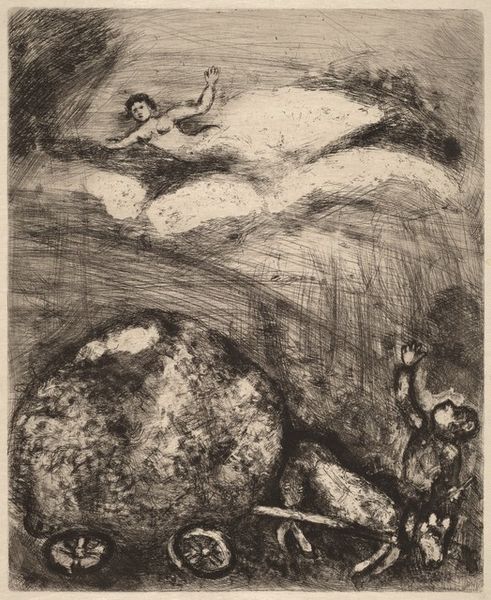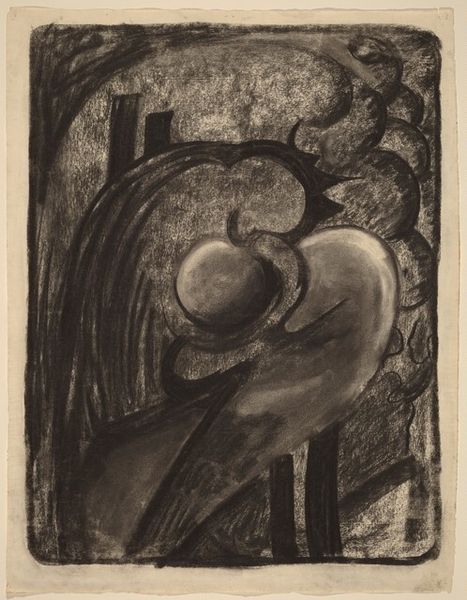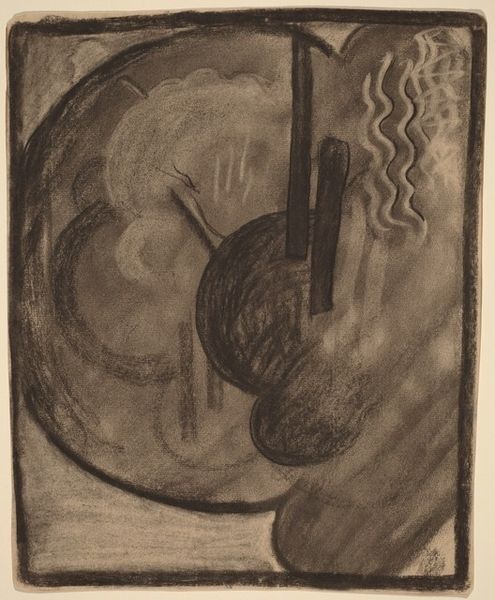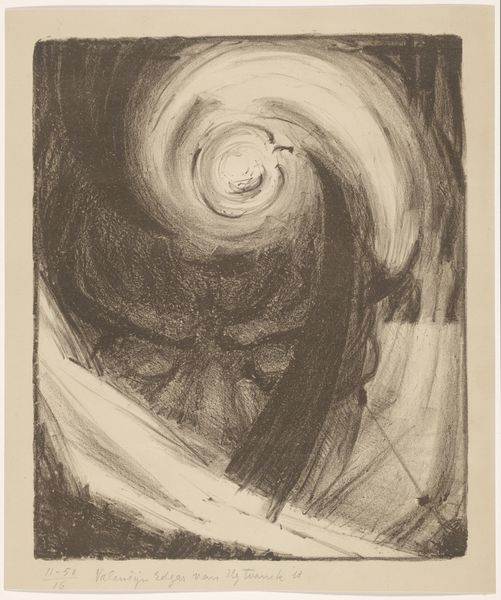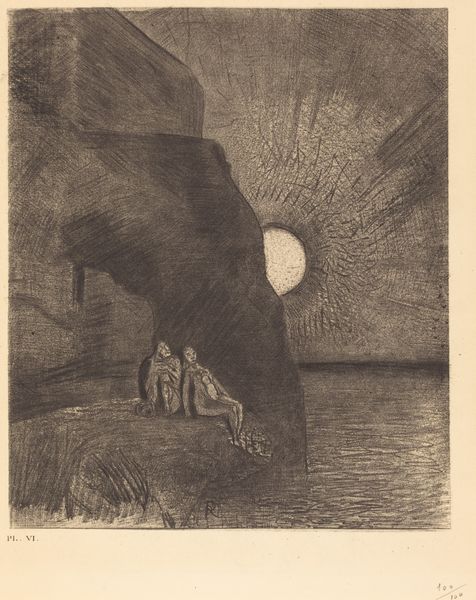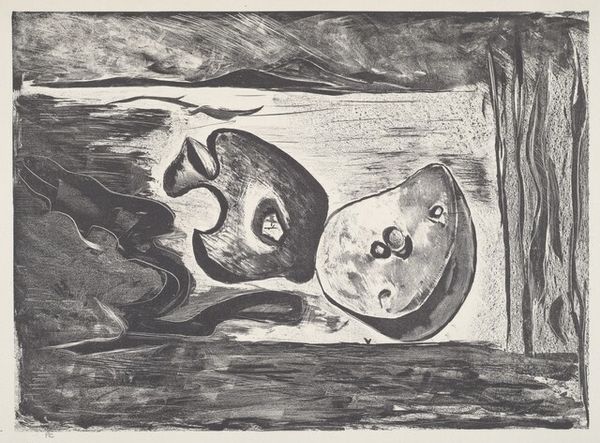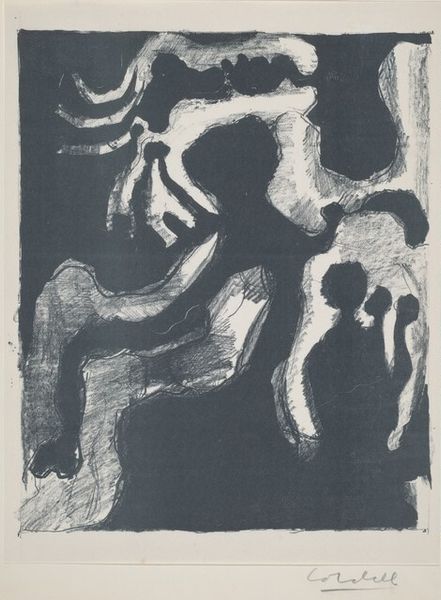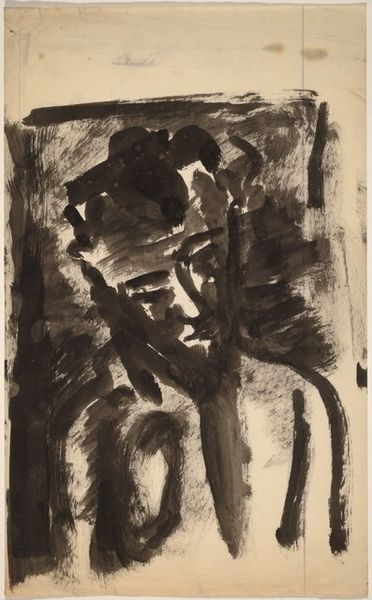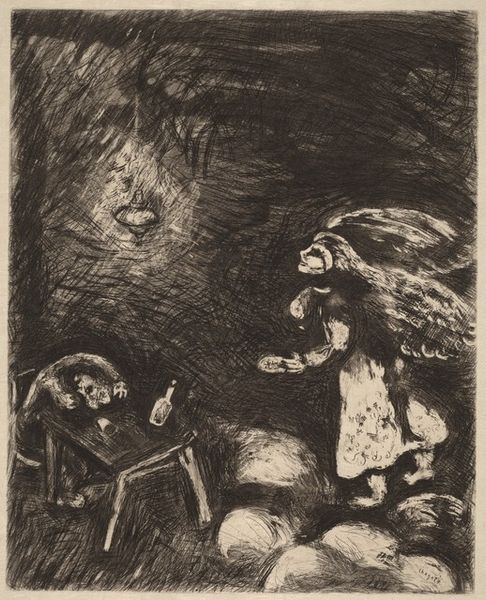
print, ink
# print
#
landscape
#
ink
#
expressionism
#
monochrome
Copyright: National Gallery of Art: CC0 1.0
Curator: The image before us, "Chantez Matines, le jour renait," which translates to "Sing Matins, the Day is Reborn," is a 1923 print by Georges Rouault. We believe it’s ink on paper, yes? Editor: Indeed. First impression? It’s somber, despite the title suggesting rebirth. That heavy, inky application… it almost feels oppressive. You can practically feel the weight of the medium. Curator: Rouault's works, especially those from this period, are imbued with social consciousness. Remember the backdrop against which he was creating, the period between world wars, full of socio-political anxieties? This stark monochrome palette speaks to those uncertain times. Editor: I’m drawn to how the ink is applied so liberally, almost aggressively. There is no illusion here, no classical pretense of seamless rendering, but in return he highlights the means by which he produces this image. It challenges what materials can produce, and whose work can produce great art. Curator: Right, and he’s known for his religious imagery, especially early on. While it resembles a landscape, with what seems to be an implied sun emerging from the darkness, he connects the sunrise to spiritual reawakening, hence the religious title "Matines," the morning prayer. He had quite a close association to the church early on in his art studies. Editor: That contrast—the darkness and the emergent light—that's what speaks to the making of art itself, or making of anything from something previously void or unshaped. From dark ink, light emerges. It reflects all kinds of manual creation, and even our daily toil. Curator: Thinking about its public role, the availability of prints like these makes art accessible. Not everyone could commission or afford an original painting, making social commentaries and messages spread more broadly. Editor: And within this image of the rising sun is that contrast between light and dark. I appreciate how it highlights how physical artmaking really illuminates abstract labor or class tensions, like religion itself for example. Well, it has been fascinating thinking together! Curator: I agree, and a reminder that the contexts surrounding art's creation shape our perception just as much as the piece itself.
Comments
No comments
Be the first to comment and join the conversation on the ultimate creative platform.
